Caring for your carnivores
Three carnivorous plants to care for during the cooler seasons.
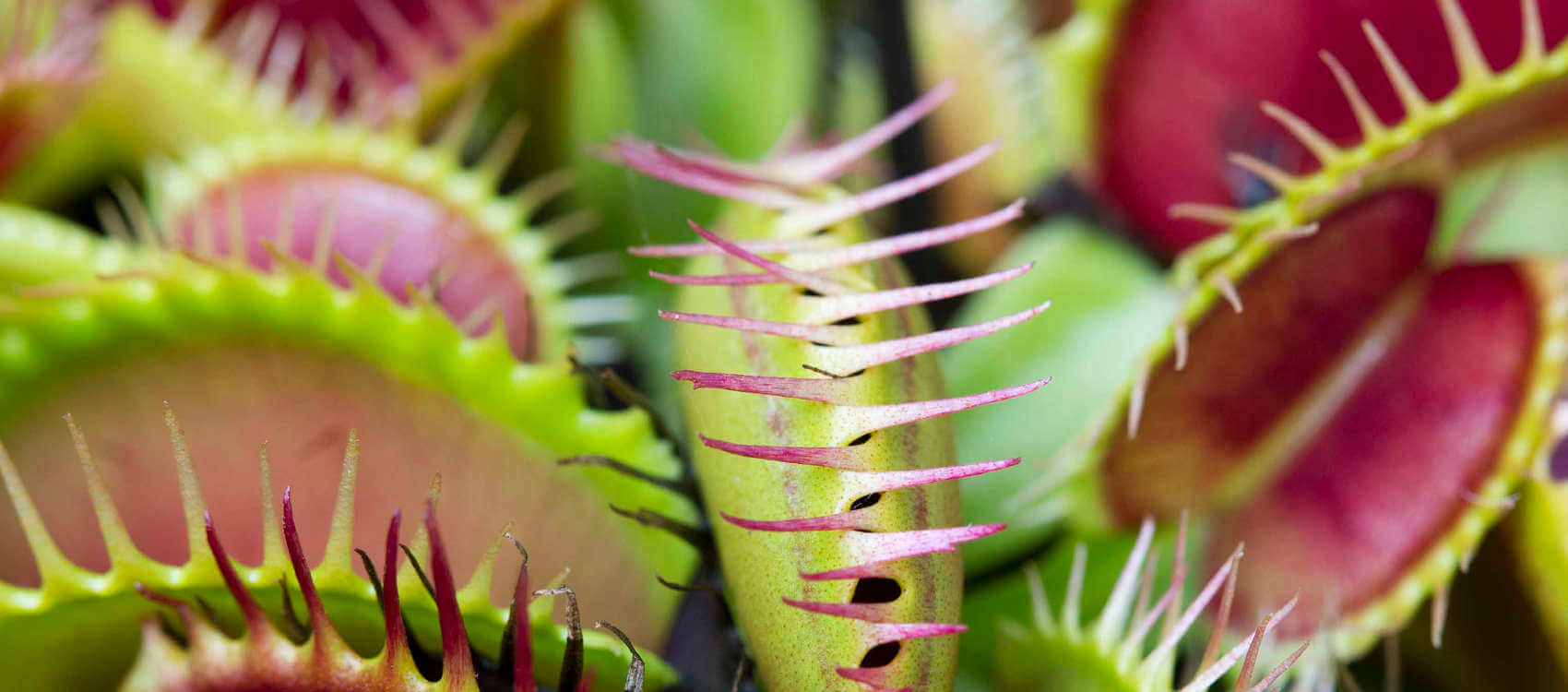
Carnivorous plants are more than just an ordinary house plant. They are an intriguing type of plant that enjoy an unusual diet that requires them to bite, dissolve and trap insects to get the nutrients they need to grow.
In the cooler months many carnivorous plant varieties enter a dormant period, during which their active growth slows, and they rest. The decreased sunlight, lower temperatures, and fewer available insects cause the leaves to turn brown. This colour change is often mistaken for the plant's death, when in fact it’s just the plant reducing activity and going into a form of hibernation.
Whether your precious plant is from the temperate swamps of North America or a tropical rainforest, they’re all relatively easy to keep and will thrive for years to come. If you follow these few simple rules in the cooler months, you will be rewarded in spring with a flush of new growth and a lot of hungry mouths ready to devour insects!
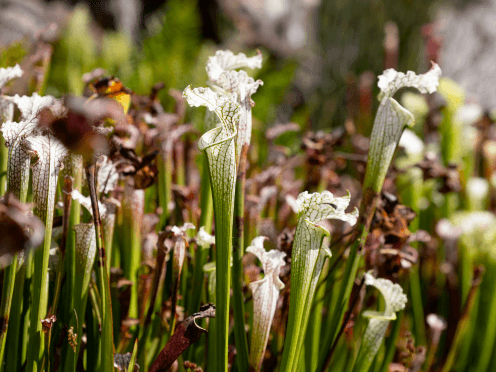
Pitcher plants in the bog garden at the Royal Botanic Garden Sydney
Venus flytraps
The tall North American pitcher plants of the genus Sarracenia and the infamous Venus Flytrap (Dionaea muscipula) are two of the more commonly grown carnivorous plants, and one of the most long-standing plant families that can live up to 20 years or longer.
These teeth-like plants thrive in bright, warm summer months but come autumn, they slow or completely stop growing and may appear dead.
During autumn, it’s important to keep them from drying out by removing dead leaves, and repotting them if required.
In fact, the venus flytrap really benefits from being potted at least every second year. A mix of pure long fibre sphagnum moss and clean washed river sand is all they need in their pot to ensure they’re getting nutrients all season round.
It’s very important to ensure you don’t over pot them - If the plant is not busting out of the pot, it will burst back with new growth in spring!
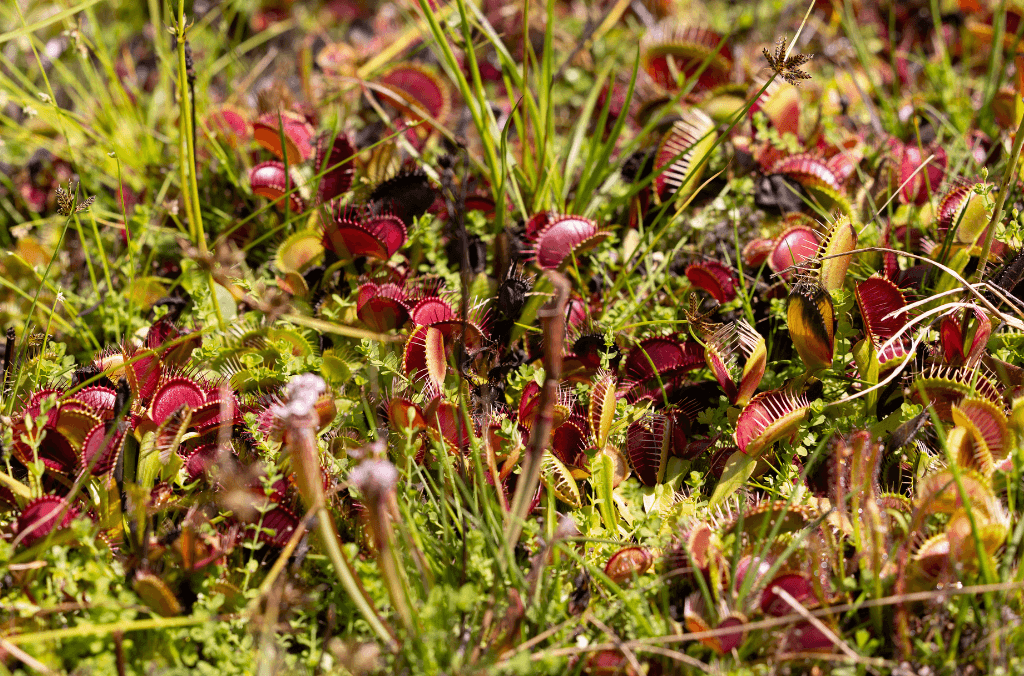
Venus flytraps in the Rock Gardens at Blue Mountains Botanic Garden Mount Tomah
Drosera
The Drosera or sundews are another rewarding carnivorous plant group that grow in the Bog Garden overlooking the UNESCO World Heritage Area wilderness at the Blue Mountains Botanic Garden Mount Tomah.
Plants in the Droseraceae family are like nature's little hunters! They lure, capture, and digest insects using sticky, stalked glands that cover their leaf surfaces. These clever plants supplement their diet with insects to make up for the poor minerals in the soil where they grow.
Charles Darwin was fascinated by the sundews’ story.. He spent years experimenting with Drosera rotundifolia, proving for the first time that plants could be carnivores. In fact, Darwin was so captivated by these plants that in a letter from 1860 he admitted:
I care more about Drosera than the origin of all the species.
These larger-than-life plant eaters attract prey with glistening drops of sticky fluid atop tentacles which cover the leaves. Sundews are best kept in a bright position, sitting in a tray of water year-round. They might slow in growth during winter, but most will continue catching and eating insects.
You can supplement their diet with a few small flakes of aquarium fish food to help keep them healthy in the cooler months. Sundews enjoy the same potting mix as the venus flytrap and are just as happy in a small pot.
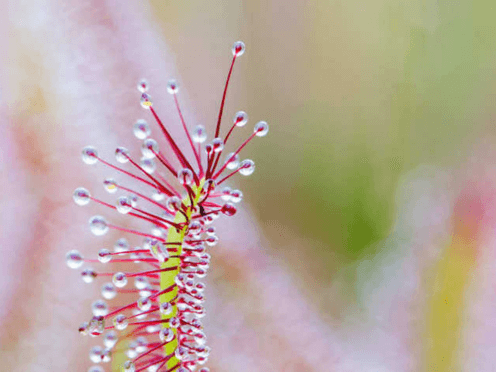
Drosera capensis close up
Pitcher plants
The climbing pitcher plants or Nepenthes are tropical plants that have a winter dormant period where their colourful insect catching traps turn yellow or brown. This is a natural part of their energy conservation process since they’re often slow in growth over winter where humidity is low.
During this period, ensure your plant is protected from dry winds to maintain humidity with regular misting and sunlight from a bright bathroom or kitchen window. It’s important over winter not to over water your climbing pitcher plant to avoid root rot.
These passive prey hunters can tolerate being quite dry over the cooler months, but always ensure air movement is present for climbing pitcher plants. If you decide to repot your plant in autumn, ensure you use a free draining orchid mix for moist soil conditions.
If you don’t have the space to care for these carnivores, you can visit them in the tropical glasshouse during the Behind the Scenes Glasshouse tour at the Royal Botanic Garden Sydney.
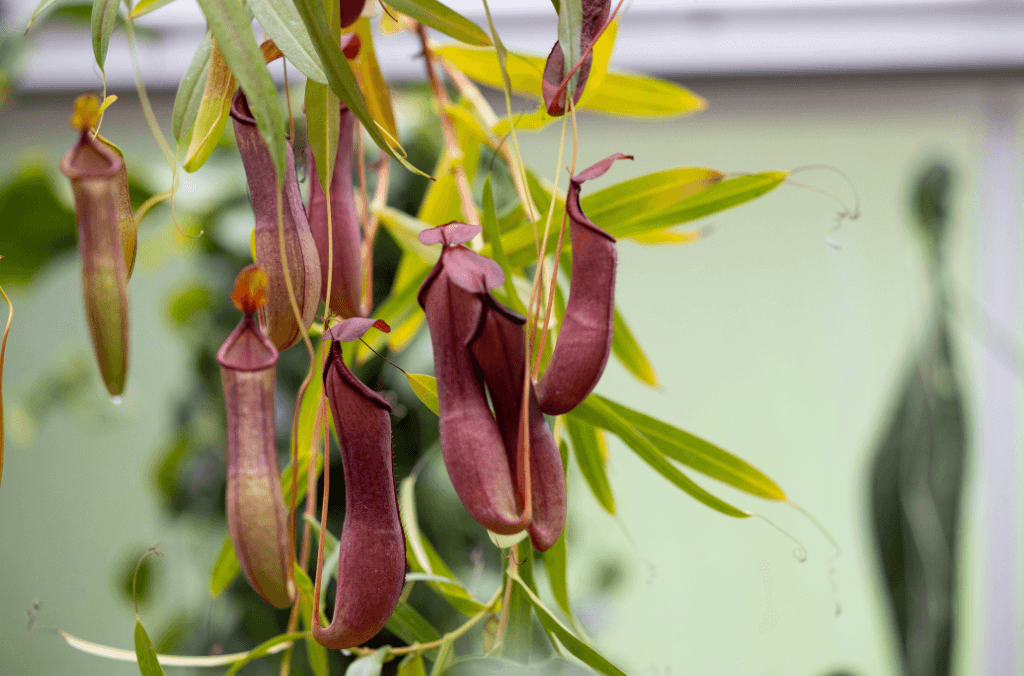
Nepenthes in the tropical glasshouse at Royal Botanic Garden Sydney
Hungry for more gardening tips?
Dig up inspiring home gardening information and ideas from our experts in our Gardening at home section to cultivate your own botanic-inspired backyard or balcony garden.
Get expert advice from our horticulturists, discover new and exciting plant species, and use commercially available plants from the Growing Friends Plant Sales to create your ideal home garden.
Related stories
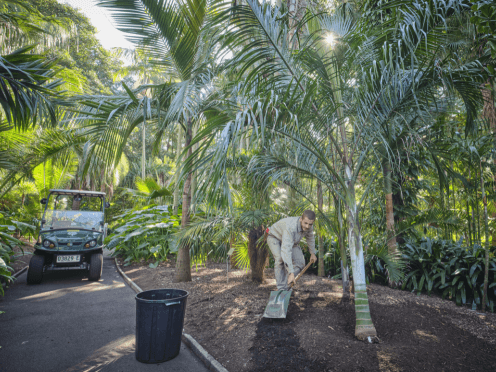
Botanic gardens across Australia and New Zealand are gearing up for Botanic Gardens Week running from 19 – 25 May.

Botanic gardens across Australia and New Zealand are gearing up for Botanic Gardens Week running from 19 – 25 May.
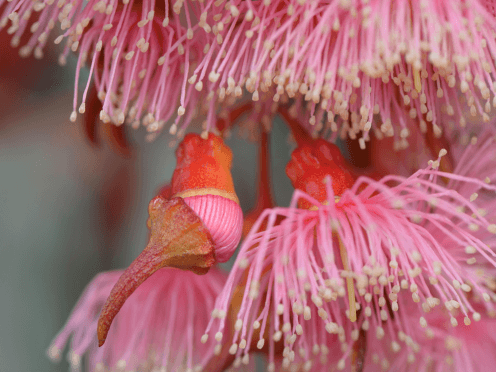
Eucalypts or gum trees are one of Australia’s most iconic plants. The scent of their oil alone evokes the bushland.